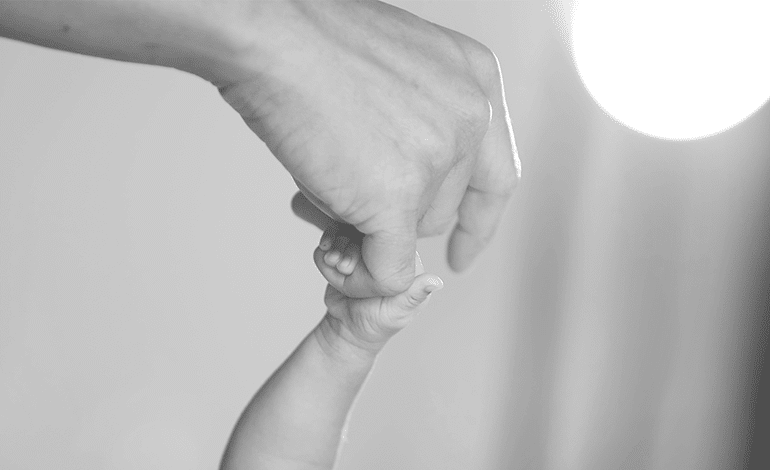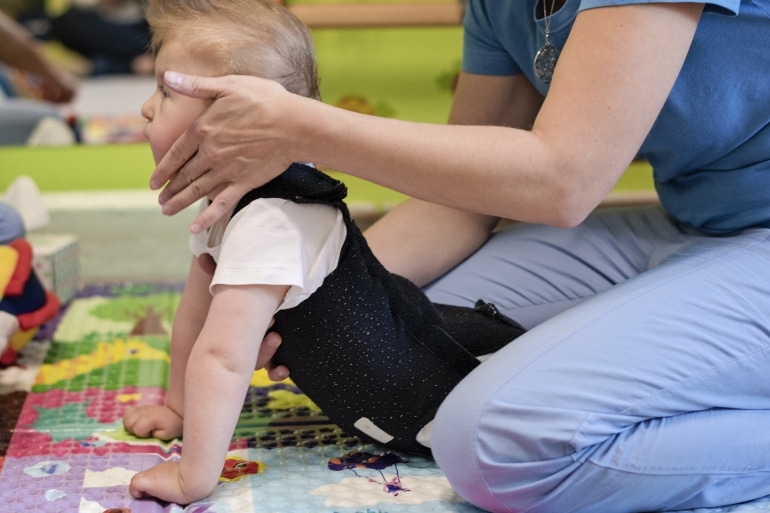MICHIGAN BABY HELP CENTER
MICHIGAN BABY HELP CENTER
Every day, babies are born with preventable birth injuries resulting from medical mistakes during pregnancy, labor or delivery.
Our birth injury lawyers can help.
Preparing for the arrival of a new baby is an exciting time, filled with hope and happy anticipation. But, when an infant suffers a birth injury, happiness quickly turns into heartbreak. Parents find themselves facing an uncertain future in a world turned suddenly upside-down. The prospective emotional and financial hardship of raising a child with special needs can seem overwhelming.
While coping with the initial shock and grief is hard enough, discovering the birth the injury was caused by a preventable medical mistake intensifies the anguish.
When negligence on the part of a doctor or other medical practitioner is suspected, the family may be entitled to file a medical malpractice lawsuit to receive compensation from the responsible party.
However, these cases are extremely complex, and proving negligence on the part of a doctor or hospital requires extensive research, documentation and, often, expert witness testimony from other physicians in the same specialty area.
This is why time is of the essence and parents should contact an experienced birth injury lawyer as soon as possible.
Get Answers & Help With A Free Consultation
THE BERNSTEIN BABY HELP CENTER IS WITH YOU EVERY STEP OF THE WAY
We are Michigan’s most experienced personal injury law firm, with more than 800 years of collective legal experience. Our knowledgeable birth injury lawyers understand the emotional and financial challenges families face with traumatic birth injuries that could have been avoided.
We are familiar with the potential costs of raising a child with special needs, including diagnostic testing, treatment from a variety of specialists, occupational, physical and/or speech therapy, medication, in-home assistance, adaptive equipment and possible long-term care.
We will fight to win compensation for current and future expenses as well as intangible damages such as pain and suffering, both emotional and physical.
If your child or grandchild has been diagnosed with a birth injury, contact us today to protect your rights and receive the compensation your child deserves.
IS A BIRTH INJURY CONSIDERED MEDICAL MALPRACTICE?
Despite the severity of some birth injuries, they are not necessarily all caused by medical mistakes. However, those resulting from negligence come under the legal category of medical malpractice.
In its simplest terms, medical malpractice is defined as any action – or failure to act – that causes harm or injury to a patient.
Every medical malpractice case must include four legal elements:
- The doctor (or medical care provider) owed a professional duty to the patient
- The provider breached this duty
- This breach caused harm or injury to the patient
- The patient sustained damages, both monetary (medical bills and lost wages) and noneconomic (pain and suffering)
To win a medical malpractice lawsuit, the victim or family must prove the physician or medical provider was negligent. These complex cases require vast legal knowledge in addition to extensive documentation that often includes expert witness testimony from other physicians and/or medical experts.
Our experienced birth injury lawyers have a long track record of winning large verdicts and settlements for our many satisfied clients.
If you suspect your child or grandchild’s birth injury could have been avoided, contact us today for a free no obligation consultation. Our birth injury attorneys know what reg flags to look for related to mistakes that occurred due to a doctor or hospital’s negligence.
Get The Compensation Your Family Deserves
WHAT IS CEREBRAL PALSY?
Discovered in the 1860s, cerebral palsy (CP), is the most common childhood motor disability, affecting approximately 1 out of every 345 children. The name comes from cerebral, meaning brain-related, and palsy, a term used to describe muscle weakness or loss of control.
However, cerebral palsy is actually an umbrella term for a group of chronic muscle disorders characterized by impaired movement and motor skills. It occurs when the part of the brain that controls muscle movement does not develop normally due to damage or other causes. This can occur at any time during pregnancy, labor and/or delivery.
Cerebral palsy is usually diagnosed in infancy or early childhood and is almost always a lifelong condition. The symptoms and degree of severity vary widely from one person to the next. A child with mild cerebral palsy might need therapy to improve balance or fine motor skills such as handwriting, while someone who is unable to walk, tie shoes or feed themselves might need permanent care.
It is not a progressive disorder, although symptoms can change during different stages of life. As with any condition, early detection and intervention can improve outcomes significantly.
Thus, problems in muscles or nerves do not cause these disorders. Instead, faulty development or damage to motor areas in the brain disrupts the brain’s ability to control movement and posture adequately.
Additionally, many people with cerebral palsy have related disorders, also known as comorbid conditions. These may include cognitive impairment, seizure disorders, problems with vision, hearing or speech, autism spectrum disorder (ASD), spine conditions such as scoliosis and joint problems such as contractures. In these instances, pediatricians may recommend one or more specialists to address and treat these issues.
If your child or grandchild has been diagnosed with a birth injury or cerebral palsy, contact us as soon as possible for a free consultation.
THE FOUR TYPES OF CEREBRAL PALSY
According to the Centers for Disease Control (CDC), there are four main types of cerebral palsy:
Spastic Cerebral Palsy
This is the most common type of cerebral palsy. It is characterized by stiff, rigid muscles, also known as hypertonia, even when muscles are resting. Spasticity can cause arms to be tight and close to the body or legs that are stiff and difficult to bend.
Dyskinetic Cerebral Palsy (also includes athetoid, choreoathetoid, and dystonic cerebral palsies)
People with dyskinetic cerebral palsy have problems controlling the movement of their hands, arms, feet, and legs, making it difficult to sit and walk. Their movements can be slow and writhing or rapid and jerky. When the face and tongue are affected, the person has trouble sucking, swallowing, and talking. Muscle tone can change from too tight to too loose during the course of a single day.
Ataxic Cerebral Palsy
This type causes problems with balance and coordination. It can cause unsteady walking as well as difficulty with tasks that require fine motor control, such as writing. They might be unsteady when they walk.
Mixed Cerebral Palsy
This is when people have symptoms of more than one kind of cerebral palsy. The most common combination is spastic-dyskinetic.
Our Birth Injury Lawyers Can Help
OTHER TYPES OF BIRTH INJURIES
Other types of birth injuries can result from oxygen deprivation, improper use of forceps or other assistive equipment or inadequate monitoring of the infant and mother during labor and delivery.
Here are the most common:
Brain damage other than cerebral palsy
Two types of injury can cause brain damage: anoxic and mechanical.
An anoxic injury occurs when there is insufficient oxygen or a respiratory obstruction during labor and delivery.
Similar brain damage also can result from a mechanical injury (physical trauma) during birth, such as a skull fracture. The improper use of forceps, suction or excessive force to the baby’s head can also cause this type of injury.
Brachial plexus injury (Erb’s palsy)
This condition may occur when an inexperienced or improperly trained physician damages a newborn’s brachial plexus by pulling on the infant’s head. Negligent actions like this can cause permanent and lifelong injuries to the baby’s arm
Facial nerve palsy
This condition affects the controllable (voluntary) muscle movement in an infant’s facial nerve. It results from pressure on the face before or during birth, usually in difficult deliveries of larger-than-average babies. It can also be caused by the improper use of forceps.
If your child or grandchild has been diagnosed with a birth injury or cerebral palsy, contact Michigan's most experienced personal injury law firm as soon as possible.
WHICH MEDICAL MISTAKES MOST COMMONLY RESULT IN BIRTH INJURIES?
Some parents are led to believe their child suffers from a birth injury that was unavoidable. Doctors rarely admit to medical errors and families trying to find an explanation for the condition wind up confused and frustrated.
The reality is that some birth injuries are caused by medical mistakes. Doctors have an obligation to provide responsible, professional care during every stage of pregnancy, from prenatal services through labor and delivery.
Here are some examples of medical mistakes known to cause birth injuries:
- Incorrect use of forceps or other delivery assistance tools
- Insufficient monitoring of mother and fetus during labor
- Delaying a Cesarean section (C-section) when the mother or baby are in distress
- Anesthesia errors
- Improper vacuum extraction
- Failing to recommend folic acid, which helps prevent neural tube defects, for pregnant women or those trying to conceive
- Neglecting to ask pregnant patients about their use of alcohol, drugs and cigarettes, and warn them about the risks of birth defects associated with these substances
- Failing to monitor a patient’s medications for drug interactions or potential harm to the fetus
- Failing to check for infections and viruses known to cause birth defects
- Insufficient monitoring of maternal weight gain and neglecting to warn patients that maternal obesity may increase the risk of birth defects
- Failing to test for gestational diabetes (diabetes that develops during pregnancy)
- Mismanaging prenatal care for diabetic patients or check for
- Failing to perform necessary tests before or during pregnancy
- Misinterpreting test results
- Inadequate monitoring of women with conditions such as heart disease, hypertension, asthma, renal disease, lupus or thyroid disease
If your child or grandchild has been diagnosed with a birth injury or cerebral palsy, contact us as soon as possible to hold the medical practitioner accountable.
Contact Our Birth Injury Attorneys
WHAT ARE THE MOST COMMON WARNING SIGNS OF A BIRTH INJURY?
Because most signs of cerebral palsy and other birth injuries appear before three years of age, parents are usually the first to suspect a problem, especially when they have other children.
Although there is a wide range of developmental norms, there are certain warning signs of cerebral palsy and other conditions. Consult your doctor as soon as possible if your infant or young child shows any of the following symptoms:
- Developmental delays
Slow to reach developmental milestones such as rolling over, sitting up, crawling, smiling and walking.
- Abnormal muscle tone
“Floppy” limbs and difficulty holding the head up (hypotonia) or stiff limbs and a general rigidness when held (hypertonia).
Some newborns start out with loose muscle tone that gradually becomes rigid after a few months.
- Asymmetry
- Unusual posture or tendency to favor one side of the body
- Trouble performing fine motor tasks such writing, tying shoes and using zippers and buttons
- Difficulty with walking, balancing and other gross motor skills
WHAT ARE THE MOST COMMON RISK FACTORS FOR BIRTH INJURIES?
Certain conditions or situations carry a higher risk of birth injury, including:
- Difficult and/or long labor
- Improper use of medication or other substances by the pregnant mother
- An abnormally large fetus
- Breech birth (buttocks first)
- Gestational diabetes (diabetes that develops pregnancy)
- Multiple births (twins, triplets or more) increase the risk of at least one infant developing cerebral palsy
- Delaying an emergency Cesarean section
- Complications such as uterine rupture or placental abruption during labor and delivery
- Maternal infections during pregnancy, labor or delivery
WHAT IS THE DIFFERENCE BETWEEN A BIRTH INJURY AND A BIRTH DEFECT?
Birth defects are structural or functional abnormalities that usually occur while a baby is in the womb. These anomalies can result in physical disabilities, cognitive and developmental impairment and other health problems.
Birth injuries typically result when something goes wrong during labor and delivery. Examples are oxygen deprivation, improper fetal monitoring or incorrect use of forceps or other assistive equipment.
Despite these differences, birth defects and birth injuries can be caused by negligence or a preventable error. If you suspect medical malpractice has occurred, a knowledgeable birth injury lawyer can help you determine the best course of action for your situation.
Get Answers & Help With A Free Consultation
CAN OBSTETRICAL NEGLIGENCE CAUSE HARM TO THE MOTHER?
Yes. Inadequate obstetrical care during pregnancy, labor and/or delivery can cause the mother to suffer harm.
These are some of the actions (or inactions) that can lead to maternal injuries:
- Inadequate prenatal care
- Physicians should evaluate expectant mothers early in the pregnancy to assess risk factors and take appropriate measures, including regular monitoring. Failing to do this may result in serious complications later on.
- Failing to perform a C-section when necessary
- Delaying a C-section when a traditional delivery is unsafe can cause birth injuries and cause maternal injuries such as uterine prolapse or other dangerous conditions.
- Anesthesia errors
- Improper administration and monitoring of general and local anesthesia can cause harm to the mother and infant.
Here are some of the most common maternal injuries that may result from obstetrical errors:
- Uterine prolapse
- When a doctor fails to perform a C-section when it is warranted, a difficult or lengthy labor and delivery can cause the muscles and ligaments of the pelvic floor to become stretched and weakened. This may result in severe pain, infection, sexual dysfunction, rectal prolapse, urinary problems and even infertility.
- Gestational diabetes
- This is a form of diabetes that develops during pregnancy. With proper monitoring, the condition can be treated successfully. However, if untreated, the condition can lead to high blood pressure or preeclampsia.
- Nerve damage
- If a physician administers an epidural anesthetic incorrectly, it can cause femoral nerve dysfunction or a lumbosacral plexus injury. These conditions affect the legs and may cause the mother to need a walker or wheelchair for an extended period of time after delivery. In some cases, there may permanent loss of sensation, mobility and strength.
- Preeclampsia
- Without proper monitoring and treatment, this can lead to eclampsia, a serious complication that can result in seizures and other life-threatening dire conditions.
WHAT IS PREECLAMPSIA?
Preeclampsia is often times considered high blood pressure in pregnancy and can be a serious pregnancy complication that can result in serious harm or death to a mother or infant. Without early detection and intervention, preeclampsia can lead to life-threatening conditions such as seizures, blindness, kidney failure, brain swelling, liver rupture and placental abruption (premature separation of the placenta from the uterus). Rarely, preeclampsia can be a precursor to eclampsia which can cause seizure, blindness and death.
High blood pressure in pregnancy usually develops after the 20th week of pregnancy. The main symptoms are high blood pressure and protein in the urine. While preeclampsia can range from mild to severe, the severity does not predict whether the patient will develop eclampsia. If high blood pressure in pregnancy proceeds into the late second or early third trimester high blood pressure medication can often times be prescribed and usually fetal surveillance will be ordered for your baby by way of ultrasound.
WHAT ARE THE WARNING SIGNS OF PREECLAMPSIA?
According to the Mayo Clinic, the following symptoms are common in women with preeclampsia. However, because some patients do not experience symptoms, regular testing for the condition should be part of every prenatal care plan.
- High blood pressure
- Excess protein in urine (proteinuria) or other signs of kidney problems
- Sudden or excessive weight gain
- Swelling (edema) of the face or extremities beyond the amount experienced in normal pregnancies (this is called third spacing)
- Decreased levels of platelets in blood (thrombocytopenia)
- Increased liver enzymes
- Severe headaches
- Changes in vision, including temporary loss of vision, blurred vision or light sensitivity
- Shortness of breath, caused by fluid in the lungs
- Upper abdominal pain, usually under the ribs on the right side
- Nausea or vomiting
If any mothers have any of these signs or symptoms it could be an emergency and should be reported to your care provider immediately.
Contact Our Preeclampsia Injury Attorneys
IS PREECLAMPSIA CAUSED BY OBSTETRICAL NEGLIGENCE?
While the reasons some women develop preeclampsia are not entirely understood, failing to diagnose and treat either condition in its early stages can be a form of medical malpractice.
Like most illnesses and medical conditions, early detection of preeclampsia can prevent the patient from developing something more serious such as eclampsia. This is why doctors should monitor expectant mothers for symptoms throughout the pregnancy.
In addition to checking weight and blood pressure, each prenatal visit should include testing the urine for the presence of protein, a major indicator of preeclampsia. This is essential because many women who develop the condition have none of the risk factors or typical warning signs.
Neglecting to provide regular monitoring and testing can constitute grounds for a malpractice lawsuit if a patient develops preeclampsia or eclampsia as a result. If this happens, hiring an experienced medical malpractice attorney is the best way to protect your rights and receive the compensation you and your family are entitled to.
WHO IS RESPONSIBEL FOR DETECTING PREECLAMPSIA?
Your care provider should be on alert for high blood pressure in pregnancy, and depending on the situation, one or more parties may be at fault when a mother or baby suffers harm. Aside from the woman’s obstetrician, medical mistakes can also be made by nurses, midwives, doctors or other individuals who played a role in monitoring the pregnancy proceeding towards delivery.
In addition to individual members of the medical team, a hospital or birthing center may be liable for failing to provide a safe, well-equipped environment staffed by capable medical professionals.
CONTACT THE BABY HELP CENTER TO START YOUR CASE TODAY
If your child or grandchild has been diagnosed with a birth injury, including cerebral palsy, we can help. Our knowledgeable and compassionate birth injury lawyers understand what you are going through and we will fight to protect your rights and win the compensation you and your family deserve.
Medical malpractice law is complicated, but finding the right birth injury lawyer is simple.
Don’t let the legal clock run out. Fill out the brief form on the right or call 1-800-CALL-SAM today for a free, no-obligation consultation with a member of our experienced legal team.
Client reviews

"THEY KEPT ME UPDATED."
- Veronica, Actual Client

"I WILL BE FOREVER GRATEFUL."
- Tim, Actual Client

"I FELT LIKE I WAS A PART OF THE FAMILY"
- Terrence, Actual Client

"VERY PROFESSIONAL & KNOWLEDGEABLE"
- Sherry, Actual Client

"PASSIONATE, COMPETENT, COMMITTED"
- Actual Client

"THEY STAND BY THEIR WORD."
- Actual Client

"KIND & COMPASSIONATE"
- Nancy, Actual Client

"YOU CAN TRUST THEM 100%."
- Michael, Actual Client

"HONEST, CARING, SUPPORTIVE."
- Janice, Actual Client

"THEY TOOK PERSONAL INTEREST IN ME."
- Janice, Actual Client

"I KNEW I WAS IN GOOD HANDS"
- Jerry, Actual Client

"NUMBER ONE PERSON I'D RECOMMEND."
- Actual Client

"SAM'S GOT YOU COVERED."
- Chris, Actual Client
RECOMMENDED READING

BIRTH INJURIES AND MEDICAL MALPRACTICE: WHAT EVERY...
For most people, the arrival of a new baby is a joyful exper Read more…
February 29, 2024

What Every Parent Should Know About Birth Injuries...
Bringing home a newborn with a serious birth injury is a hea Read more…
April 23, 2020

The Best Children’s Hospitals in Michigan...
Few things are more distressing to a parent than being told Read more…
August 12, 2019

When to Contact a Birth Injury Lawyer...
A traumatic birth injury is every parent’s nightmare. Drea Read more…
October 18, 2018

What Are Your Rights as a Patient?...
When you are admitted to a hospital or move into a nursing h Read more…

